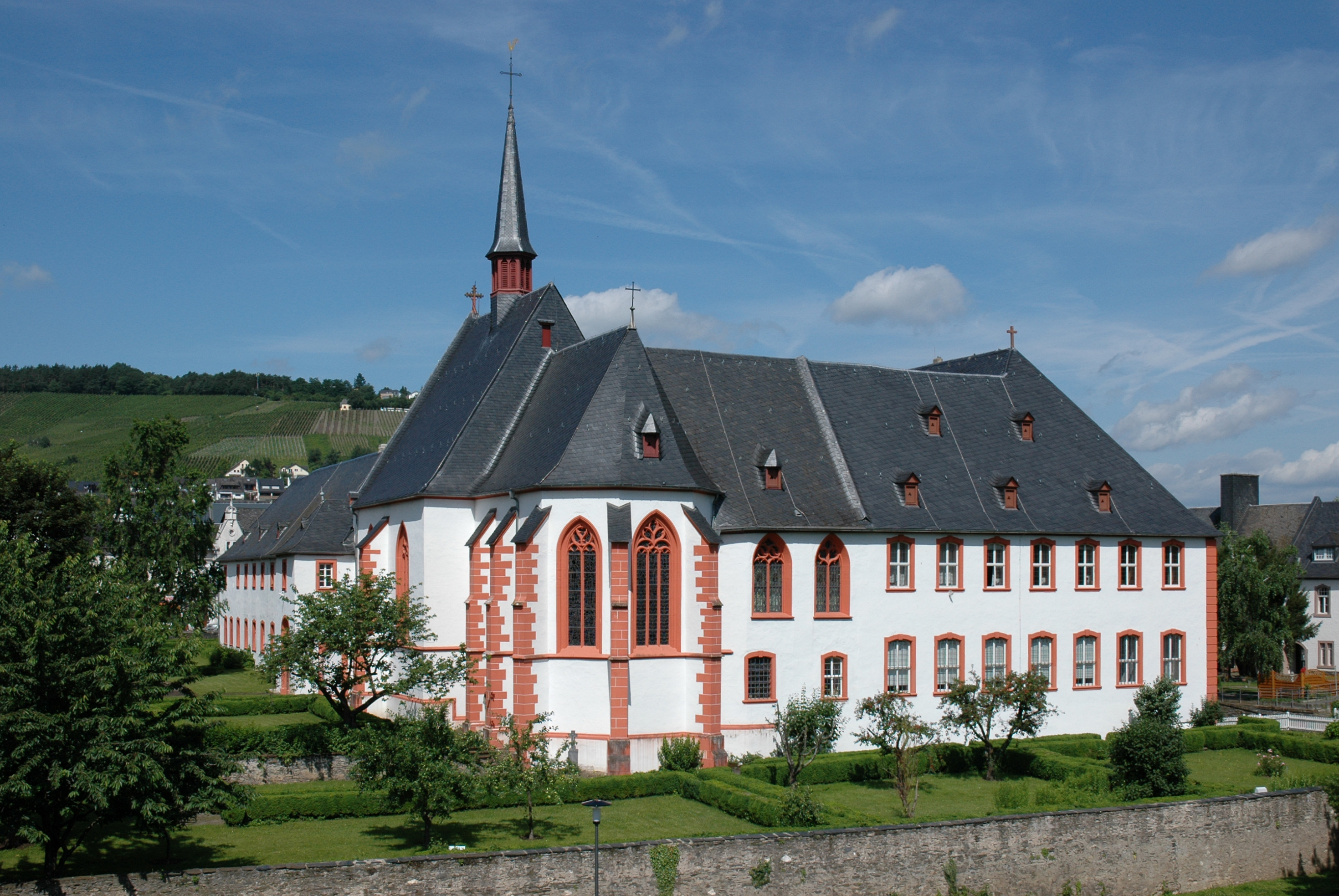
The beautiful and historic Fachwerk half-timbered homes of Bernkastel-Kues invited us to take a relaxed stroll through the cobblestone streets and alleys.
The city offers many shops, and restaurants that looked inviting enough to sit down, relax and eat, enjoy a Zwiebelkuchen

Driving towards Bernkastel Kues we saw the Lieser Castle, now a Hotel, on the left side of the road. We were very impressed, and once we checked into Cafe Rosi Hotel, we returned to take a tour through this magnificent building
Our little Bed and Breakfast Cafe Rosi. We had a fantastic view from the upstairs window. The food they served was delicious, and the little terrace Biergarten also looked inviting.
Bernkastel-Kues is a city divided on each side by Bernkastel on one side, Kues by the Moselle River. This place is dominated by the castle ruin Landshut (see above), which has a picturesque view with its 2000-year history and the surrounding vineyards.

Bernkastel is best known for its magnificent, medieval old town. Numerous half-timbered houses, the fragile-looking pointed house, which seems to have been balancing on socks that are much too small since 1416.
Buy this Bernkastel-Kues Landmark Fachwerk here on Amazon
One of the most important philosophers of the Middle Ages saw the light of day here: Nikolaus von Kues, alias Cusanus, whose legacy can be seen in the house where he was born and in the St. Nikolaus Hospital he founded.

Visiting a Vinothek in the Cusanusstrasse we took a tour to the multimedia wine experience world. In combination with the creations of the Moselle cuisine that were regional, fresh and good. Being a connoisseur got me really excited!
Below Vinothek in the Cusanusstrasse
The vineyards are known for the excellent Riesling that have made the Moselle wines famous throughout the world. The best wines in the world thrive in a mild climate, on the mineral-rich soil in steep slopes. Wine regions such as the “Bernkasteler Doctor” or the “Wehlener Sonnenuhr” have stood for exemplary quality for generations.
In 1291 Bernkastel received city rights at the instigation of Archbishop Boemund I of Trier. The first town hall was probably built shortly afterwards.

Today’s town hall facade is a splendid work of the German late Renaissance by the Trier sculptor R. H. Hoffmann (built in 1608). The patron and patron of Hoffmann was the then Archbishop Lothar von Metternich (1599 – 1623), whose coat of arms adorns the town hall bay in addition to the Electorate of Trier cross and the Bernkastel city coat of arms.
The bay window rests on a basalt column and carries a stone figure of Salvator mundi, the world redeemer with the globe, on the baroque, curved roof.On the left corner pillar of the facade on the ground floor, the pillory can still be seen today, where the perpetrators were handcuffed to the public pillars of abuse with chains and handcuffs.
Not only cultural, but also sporting activities are very important in Bernkastel-Kues. We saw many people cycling along the Moselle, hiking through the vineyards or on the new Moselsteig. It seemed they enjoyed the pure activity and relaxation.


Watching the boats go by with a soft clapping of waves, viewing the majestic steep slopes of the vineyards and the Mosel. Simply beautiful!









